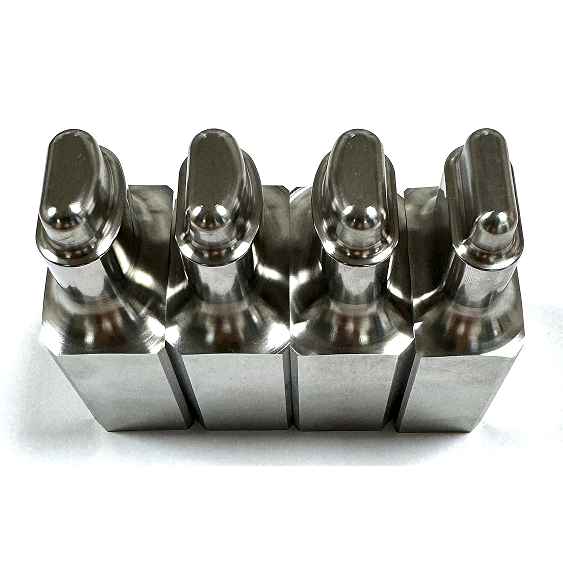Precision CNC Maching Steel Parts SKH51
- Identification of Product: P005
- Material: SKH51
- Treatment: None
- Process: raw material →grinding→ CNC milling
- Features: This workpiece is a precision component used in stamping molds. The verticality of the workpiece is 0.005, the flatness is 0.01, the tolerance of the CNC section on the head is ±0.005, and the shape tolerance is ±0.002.
Description
Capabilities of CNC Milling Steel Parts SKH51
- Raw material –SKH51
- Equipment used–grinder and 3-axis CNC machine
- Cutting tools –Milling cutters, drills, taps, etc.
- Machining process –Cutting materials on-demand→ Rough Grinding→ CNC roughing→ heat treatment →Precision grinding →CNC finishing→ edge burr treatment
- Testing tools and equipment –Three-coordinate, Height gauge, profile projector
- Packing –5-layer corrugated paper outer box + bubble bag + pearl sponge
Why Is Steel a Popular Material for CNC Machining?
Steel has become one of the most widely used materials in CNC machining due to its excellent mechanical properties, broad range of material options, cost-effectiveness, and high adaptability to machining. The reasons for its popularity include:
Performance Characteristics
High Strength and Hardness:
Steel exhibits high strength and hardness, enabling it to withstand significant external forces and cutting loads. It is ideal for producing components that bear heavy loads and wear, such as molds, shafts, and gears. Heat treatment can further enhance its mechanical performance.
Toughness:
Steel possesses good toughness, which allows parts to resist fractures under impact and vibration, ensuring reliable performance in complex working conditions.
Wear Resistance:
With proper surface treatment, steel can achieve high surface hardness and excellent wear resistance, extending the service life of components—especially in applications such as machine tool guideways and cutting tools.
Corrosion Resistance:
Certain types of steel, such as stainless steel, offer good resistance to corrosion, allowing them to perform well in humid or chemically aggressive environments. This makes them suitable for industries such as chemical processing, food production, and medical devices.
Machinability
Good Cutting Performance:
Steel is generally easy to cut and shape with CNC tools. By adjusting machining parameters according to the specific type of steel, high surface quality and machining efficiency can be achieved.
- High Dimensional Accuracy:
CNC machining allows for precise control of tool paths and cutting conditions. Combined with steel’s stable machining properties, this enables the production of high-precision parts suitable for demanding applications. - Strong Formability:
Steel can be pre-formed into various shapes through forging or rolling, then finished via CNC machining. This makes it suitable for manufacturing complex components with intricate geometries.
Cost and Supply Advantages
- Relatively Low Cost:
Compared to rare metals and high-performance alloys, steel is more economical and widely available. This helps reduce manufacturing costs, particularly in mass production scenarios. - Stable Supply:
Steel is produced on a large scale, with a mature supply chain. A wide range of specifications and grades are readily available, enabling manufacturers to meet diverse application needs.
Weldability and Surface Treatment Compatibility
Steel is easy to weld and supports a variety of surface treatments such as coating, electroplating, and polishing. These processes allow for both performance enhancement and improved aesthetics according to specific application requirements.
Extensive Industrial Applications
Owing to its balanced combination of performance and cost, CNC machined steel parts are extensively used in various industries, including automotive, aerospace, medical, energy, machinery, and construction.






